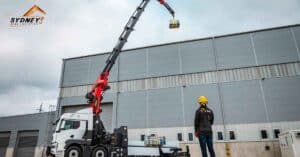In the ever-evolving landscape of construction, cranes have emerged as a cornerstone of modern building practices. These towering machines, with their impressive lifting capacities and versatile functionalities, have revolutionized the way we approach construction projects. From towering skyscrapers to intricate industrial facilities, cranes play an essential role in shaping our built environment.
In this blog, we are going to explore the myriad functions of cranes in the construction industry, understanding how they enhance efficiency, productivity, and safety on job sites. By examining their roles, we can appreciate the advancements in construction technology that have made modern infrastructure possible.
Key Functions of Cranes in Construction
1. Lifting Heavy Materials
One of the most fundamental roles of cranes in construction is their ability to lift and transport heavy materials. Whether it’s steel beams, concrete blocks, or large equipment, cranes can handle loads that would be impossible for manual labor. This capability not only speeds up the construction process but also ensures that materials are positioned accurately and safely.
2. Facilitating Vertical Construction
Cranes are essential for vertical construction, enabling the building of skyscrapers, towers, and multi-story structures. By hoisting materials to great heights, cranes make it possible to assemble upper floors efficiently. Tower cranes, in particular, are designed to reach considerable heights, making them a critical asset in urban construction projects.
3. Horizontal Movement and Placement
In addition to lifting, cranes also facilitate the horizontal movement and precise placement of materials. This function is crucial for tasks such as installing horizontal beams, positioning prefabricated elements, and organizing materials across the site. The ability to move materials horizontally ensures a smooth workflow and reduces the need for manual handling.
4. Assembly and Installation
Cranes play a significant role in the assembly and installation of various structural components. From erecting steel frameworks to installing precast concrete panels, cranes provide the necessary support and stability for these operations. Their precision and strength are vital in ensuring that components are correctly aligned and securely fastened.
5. Improving Efficiency and Productivity
By handling heavy and cumbersome materials efficiently, cranes significantly enhance the productivity of construction projects. The time saved in lifting and transporting materials allows for faster project completion and reduces downtime. This improved efficiency translates to cost savings and the ability to meet tight project deadlines.
6. Reducing Manual Labor
The use of cranes greatly reduces the reliance on manual labor for heavy lifting and material transportation. This not only alleviates physical strain on workers but also minimizes the risk of injuries associated with manual handling. As a result, cranes contribute to a safer and more sustainable work environment.
7. Enhancing Safety by Minimizing Injury Risks
Cranes are engineered with safety features that help prevent accidents and injuries on construction sites. Their controlled lifting mechanisms, stability systems, and operator training programs ensure that materials are handled safely. By minimizing the need for manual lifting, cranes reduce the likelihood of musculoskeletal injuries and other common construction hazards.
8. Handling Complex Construction Projects
Cranes are indispensable in managing complex construction projects that involve intricate and large-scale operations. Whether it’s constructing a bridge, assembling an offshore platform, or building a massive industrial facility, cranes provide the necessary versatility and strength to handle these demanding tasks. Their adaptability to various construction scenarios makes them a critical asset for modern construction.
Conclusion
Cranes are more than just towering machines on construction sites; they are the backbone of efficient, safe, and productive building practices. Their ability to lift heavy materials, facilitate vertical and horizontal movement, and enhance safety has transformed the construction industry. By reducing manual labor and handling complex projects, cranes contribute significantly to the advancement of construction technology and methodology. As construction projects continue to grow in scale and complexity, the role of cranes will remain indispensable, driving progress and innovation in the industry.
Ready to experience top-notch logistics solutions in Sydney? At Sydney Hiab Logistics, we offer reliable, efficient, and affordable Hiab truck hire services tailored to meet your unique needs. Whether you’re handling heavy construction materials, industrial equipment, or any other large load, our expert team and state-of-the-art fleet are here to ensure a seamless and safe transport experience.
Don’t wait! Contact us today for a free quote and discover how Sydney Hiab Logistic can make your project easier and more cost-effective. Call us now 0420 861 232




